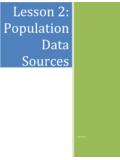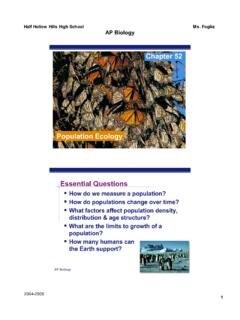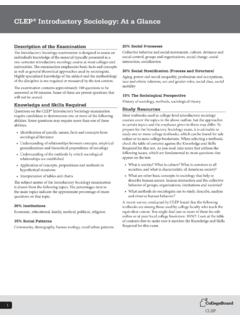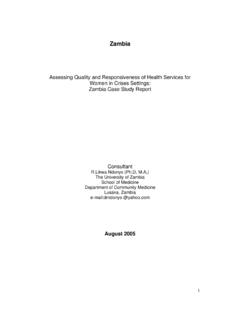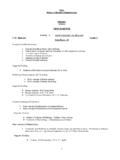Transcription of F3 ZJ DC 05-07-07 Report Myanmar WHO-AIMS …
1 WHO-AIMS Report ON MENTAL HEALTH SYSTEM IN Myanmar MINISTRY OF HEALTH UNION OF Myanmar WHO, Country Office of MyanmarWHO, Regional Office for South-East AsiaWHO Department of Mental Health and Substance Abuse (MSD) WHO-AIMS Report ONMENTAL HEALTH SYSTEMIN MYANMARA Report of the assessment of the mental health system in Myanmarusing the World Health Organization - Assessment Instrument forMental Health Systems ( WHO-AIMS ).Yangon, Myanmar2006 Ministry of HealthUnion of MyanmarWHO Library Cataloguing-in-Publication data WHO-AIMS Report on mental health system in Myanmar . 1. Mental Health. 2. Mental Health Services. 3. Health Policy. 4. Primary Health Care statistics and numerical data. 5. Hospitals, Psychiatric statistics and numerical Health Expenditure.
2 7. Training Programs. 8. Myanmar . I. World Health Organization,Regional Office for South-East Asia. II. Ministry of Health, Union of 978-92-9022-304-7 (NLM classification: WM 105) World Health Organization 2006 Publications of the World Health Organization enjoy copyright protection in accordance withthe provisions of Protocol 2 of the Universal Copyright Convention. For rights of reproductionor translation, in part or in toto, of publications issued by the WHO Regional Office for South-East Asia, application should be made to the Regional Office for South-East Asia, WorldHealth House, Indraprastha Estate, New Delhi 110002, designations employed and the presentation of material in this publication do not implythe expression of any opinion whatsoever on the part of the Secretariat of the World HealthOrganization concerning the legal status of any country, territory, city or area or of itsauthorities, or concerning the delimitation of its frontiers or publication has been produced by the WHO, Country office of Myanmar in collaborationwith Ministry of Health, Myanmar and WHO, Regional Office for South-East Asia and WHO.
3 Headquarters. At WHO Headquarters this work has been supported by the Evidence andResearch Team of the Department of Mental Health and Substance Abuse, Cluster ofNoncommunicable Diseases and Mental further information and feedback, please contact:1) Professor Hla Htay, Department of Mental Health, University of Medicine2) Professor Adik Wibowo, WHO representative to Myanmar3) Vijay Chandra, WHO, SEARO, e-mail: Shekhar Saxena, WHO Headquarters, e-mail: Health Organization 2006 Suggested citation: WHO-AIMS Report on Mental Health System in Myanmar , WHO, Yangon,and Ministry of Health, Nay Pyi Taw, Myanmar , World Health Organization Assessment Instrument for Mental Health Systems ( WHO-AIMS )was used to collect information on the mental health system of study was carried out by Professor Hla Htay of the Department of Mental Health, Universityof Medicine (1)
4 , Yangon and Mental Health Hospital Yangon, preparation of this study would not have been possible without the collaboration of theMinistry of Health, Department of Health, Department of Health Planning, Department of MedicalSciences, University of Nursing, Budget and Finance Unit, Department of Health, MandalayMental Health Hospital, Mental Health Units in States and Divisions and Department of SocialWelfare. We are grateful for the support of the Medical Superintendent, Yangon Mental HealthHospital, Consultant/Lecturer, Forensic Psychiatric Unit, Yangon Mental Health Hospital, RectorUniversity of Medicine (1), Rector University of development of this study has also benefited from the collaboration with: health managementinformation system unit of the Department of Health Planning and unit of medical social work,Department of Health and Director (Public Health) Department of Health that provided project was supported by Adik Wibowo, WHO representative to project was also supported by Vijay Chandra, Regional Office for South-East World Health Organization Assessment Instrument for Mental health Systems ( WHO-AIMS )has been conceptualized and developed by the Mental Health Evidence and Research team (MER)of the Department of Mental Health and Substance Abuse (MSD), World Health Organization(WHO), Geneva, in collaboration with colleagues inside and outside of refer to WHO-AIMS (WHO, 2005)
5 For full information on the development of WHO-AIMS at the following project received financial assistance and/or seconded personnel from: The National Instituteof Mental Health (NIMH) (under the National Institutes of Health) and the Center for MentalHealth Services (under the Substance Abuse and Mental Health Services Administration[SAMHSA]) of the United States; The Health Authority of Regione Lombardia, Italy; The Ministryof Public Health of Belgium and The Institute of Neurosciences Mental Health and Addiction,Canadian Institutes of Health WHO-AIMS team at WHO Headquarters includes: Benedetto Saraceno, Shekhar Saxena,Tom Barrett, Antonio Lora, Mark van Ommeren, Jodi Morris, Anna Maria Berrino and GraziaMotturi. Additional assistance has been provided by Zainab WHO-AIMS project is coordinated by Shekhar SummaryThe World Health Organization Assessment Instrument for Mental Health Systems ( WHO-AIMS ) was used to collect information on the mental health system in Myanmar .
6 The goalof collecting this information is to improve the mental health system and to provide abaseline for monitoring the change. This will enable Myanmar to develop information-based mental health plans with clear base-line information and targets. It will also beuseful to monitor progress in implementing reform policies, providing community services,and involving users, families and other stakeholders in mental health promotion, prevention,care and and Legislative FrameworkMyanmar has a mental health policy which is incorporated with the general health policydocument. The last version of the mental health plan was revised in 2006. A disasterpreparedness plan for mental health is present, and was last revised in 2006. The MentalHealth Legislation Lunacy Act was enacted in 1912 and is outdated.
7 Mental healthexpenditure is of total health care Health ServicesThere are 25 outpatient mental health facilities, 2 day treatment facilities, 17 community-based psychiatric inpatients units and 2 mental hospitals. The majority of beds in thecountry are provided by mental hospitals, followed by residential units. The percentage offemale users is less than 40% of the patient population in all mental heath facilities. Thepopulation of female users is highest in inpatient units (35%) and out patient units (24%).The diagnosis of schizophrenia and neurotic disorders are the most frequent diagnoses inout-patient facilities, and schizophrenia and mood disorders are the most common diagnosesin mental hospitals. Essential psychotropic drugs from each therapeutic class are availablein inpatient units, mental hospitals and out-patient Health in Primary Health CareIn terms of refresher training on mental health, 1% of primary health care doctors, 3% ofnurses, and 2% of non-doctor/non-nurse primary health care workers have received atleast two days of non-nurse primary health care workers are not allowed to prescribepsychotropic medications in any circumstance.
8 Nurses are allowed to prescribe, but withrestrictions; they are not allowed to initiate prescription but are allowed to continueprescription. Primary health care doctors are allowed to prescribe psychotropic medicationswithout ResourcesThe total number of human resources working in mental health facilities or privatepractice per 100,000 general population is There are 89 psychiatrists ( per100,000 population ), 13 other medical doctors ( per 100,000 population ), 127 nurses( per 100,000 population ), four psychologists ( per 100,000 population ), 23social workers ( per 100,000 population ), one occupational therapist ( perv100,000 population ), and eight other health or mental health workers ( per 100,000population).Public Education and Links with Other SectorsThere have been public education and awareness campaigns targeting professional groupsincluding health care providers (traditional medicinal medicine, conventional, and modern).
9 There was an awareness campaign in Nyaungdon Township for epilepsy with the supportof and ResearchThe Departement of Health Planning monitors data collected from the whole data, including data on mental health, is analyzed and published and WeaknessesStrengths1. The data collected from the Health Management Information System (HMIS), iscommunity based, so data and indicators represent the whole The health management information system has a data dictionary. This is astandardized book that explains/defines psychosis, depression, anxiety, alcoholuse disorder, mental retardation and epilepsy. The data dictionary contains achecklist used for diagnosing and reporting the six mental disorders listed all the basic health staff (BHS) from states and division has been trainedso the results are Reporting systems were well arranged, and internet computer system were applied,so the data was received in a timely Data from peripheral and remote areas was difficult to get in time because of poortransportation and The majority of people who seek treatment for mental health concerns consultfaith healers.
10 Data on these people is missing, and they did not get proper Some data was unattainable due to communication difficulties and was collected in 2006 and is based on the year COUNTRY Report FOR MYANMARI ntroductionLocation & GeographyMyanmar is the largest country in mainland South-East Asia with a total land area of676,578 square kilometers. It stretches 2200 kilometers from north to south and 925kilometers from east-west at its widest point. It is bounded on the north-east by the People sRepublic of China, on the east and south-east by the Lao People s Democratic Republicand the Kingdom of Thailand, on the west and south by the Bay of Bengal and AndamanSea, and on the west by the People s Republic of Bangladesh and the Republic of India.










